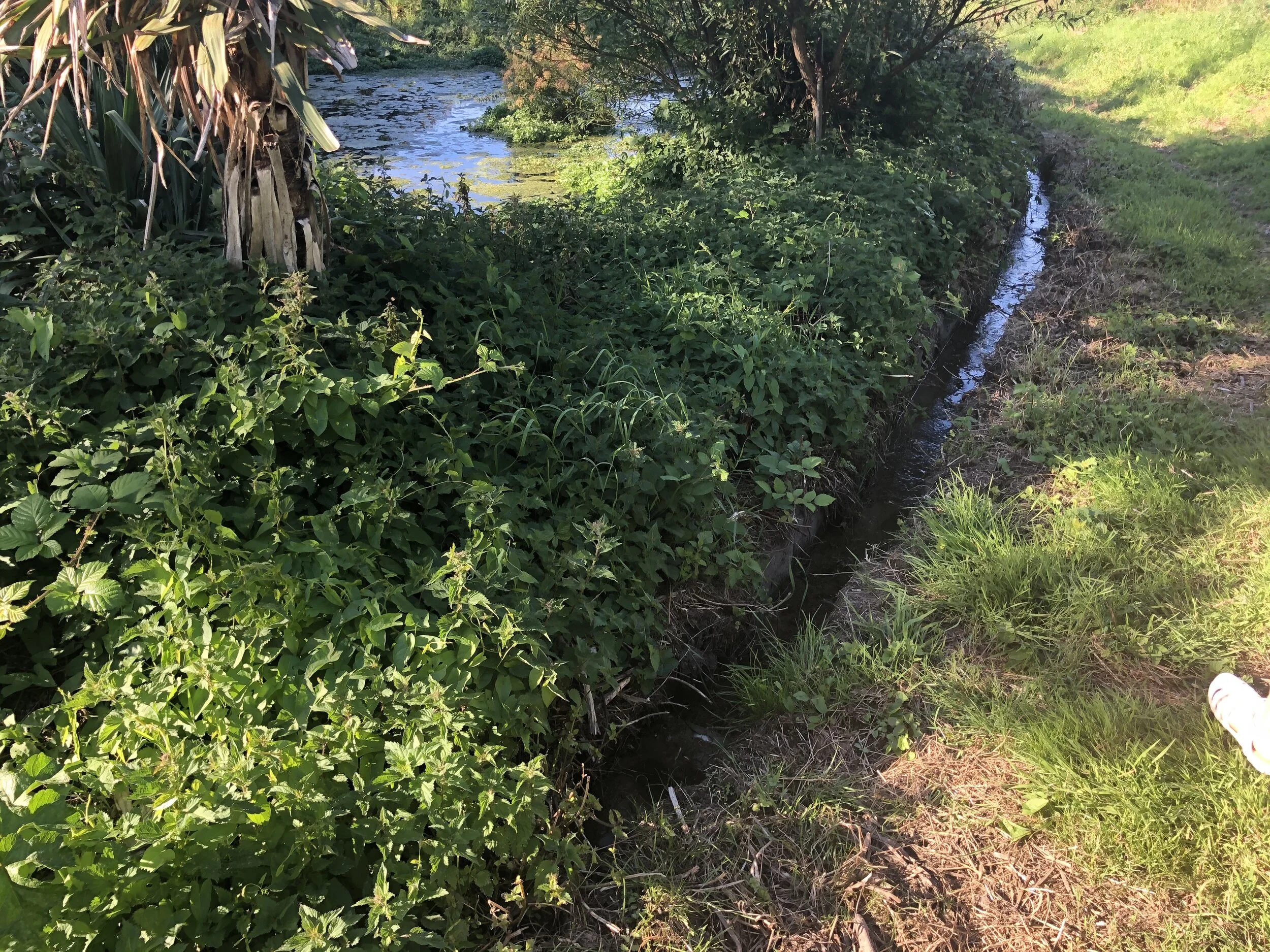We have been at Le Val Bachelier since April 2019, and had time to observe the land during this time.
Water
Nitrate levels of Well 164 mg/L. Full report here
We tested the water quality through the States of Jersey laboratory last year, which showed extreme levels of nitrates and other pollutants, the States of Jersey lab cannot identify the other pollutants, but there has been intensive use of pesticide and herbicides in the area for decades. So the presumption is that was this contaminants will be made of.
Investment has already been made to manage water running from the lane and road, which large gutters and underground pipes which takes the road water, and neighbouring field run off through the valley, bypassing the pond and into the stream which runs all the way to the beach.
A pond as been created in the lower valley, which is a spring and has an overflow which drains water continually, even in draught season. The pond is one meter deep, and is host to breeding of wild ducks and moorhens, and many other insects and amphibians.
The house was originally supplied by a shallow well in the front garden, which we stopped using due to high contaminant levels last year, we continued to pump the well for house toilets but this July the levels went too low for our pump to cope, so we have switched fully to mains.
There is also another stone lined spring, and small well at the bottoms of the terraces next to the bamboo and the overflow joins the stream, which passed out of the ground at the bottom of the terraces and runs by the willow.
We have noticed that the combination of wind with a lack or rain dries out the top fields and the bowl, rapidly, and this May, these fields soon felt like concrete.
During the west season being located in the valley, a lot of water flows through we have created better drainage taking the water passed the house and into the stream.
Parts of the valley, including the bramble patch, lower terraces and to the East of the pond are boggy in the rainy season. We planted fruit trees in the lower terraces last Autumn but had to move them when we realised this.
Discussions and Ideas
We have been thinking a lot about creating ponds, or other forms of catchment higher up the valley, to capture or pump to, to then irrigate different zones, or create gravity irrigation to irrigate during the initial stages.
Wind
It is clear that with close proximity to the sea, and also being on one of the highest tips of the coast, wind is our biggest challenge especially when nurturing young plants and trees.
Wind speeds regular reach 100mph. Many mature trees also show signs of wind damage with burnt leaves, and a row of near by pines, fall regularly.
The wind come up and down through the valley, from the north and south, the northerly winds bring salt, and are generally the more drying winds.
Discussions and Ideas
We realise that correctly positioned wind breaks are a priority for this project.
There is a local cheap tree scheme through the organisation - Trees for Life which could provide hedging.
We have also started experimenting with green waste, that is delivered to the farm, by a local tree surgeon and hedge cutter. We have been making temporary wind breaks with this waste material, which also double as habit for birds, and will eventually adding to the soil.
We have also been experimenting with homemade large cloches and cold frames. We set them this year in April to provide shelter for young vegetables that are not able to survive the wind, we have had them open since the winds stopped May time. But we have recognised they have also been useful to protect the vegetable from chickens and caterpillars. They are hinged so easy to open and close, and just about light enough to move around.
We have been thinking to make a plant and tree nursery in the top yard, which is most sheltered from wind.
Soil
We have not conducted any testing of soil here on the land. It is safe to say that the Soil is generally sandy, not clay. The soil in the valley feels very rich, spongy, and deep. Relatively untouched, apart from Lower Valley west, where we suspect some agriculture has taken place and chemicals used as it is not a prosperous as the other side of the valley.
The top agricultural fields tell another story. The soil is like dust and soon compacted and turns to concrete.
We believe that the top soil is greatly diminished due to ploughing and wind. In fact we have experienced high levels of air pollution when the soil has been ploughed in the winter months.
The soil in the bowl, though not farmed has become compacted from a number of diggers and other large vehicles using it as a carpark when we were redoing the drains and joining mains water last year.
Also the soil on the terraces we created are also compacted.
Discussions and Ideas
As green waste is in abundance, we have considered using it to layer onto on the compacted soil. Also to start a large composting initiative.
We also have an abundance of seaweed available at the local beach, we have been adding this the terraces.
We would like to create a composting site at the farm, and a practical area to make compost tea.
We also have an abundance of nettles, which we have been eating, and making tea, and a compost tea.
We have also recently introduced chickens, and have also discussed other livestock in the system, but not really come to any conclusion yet.
Bracken is also abundant and a good compost.






